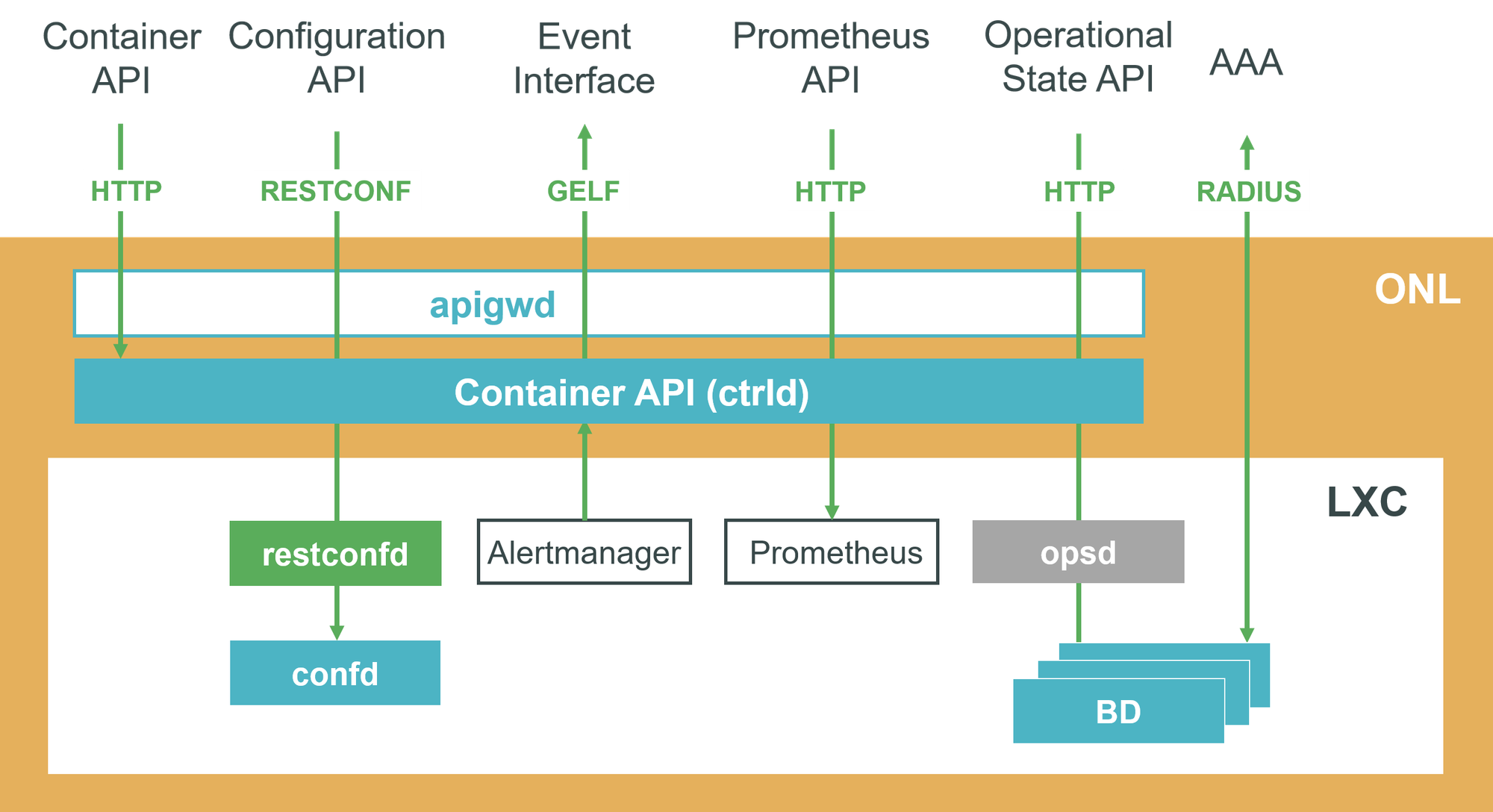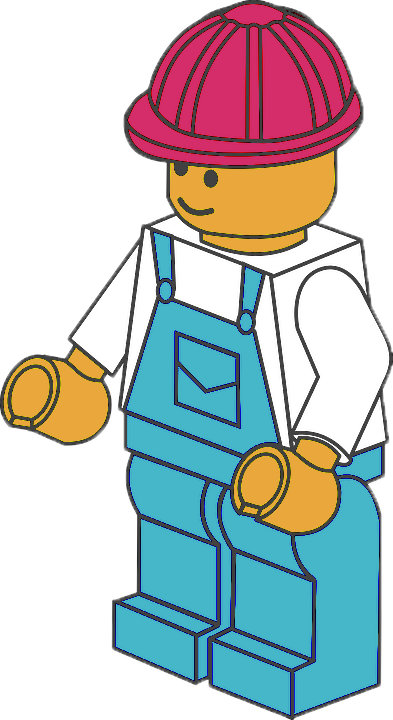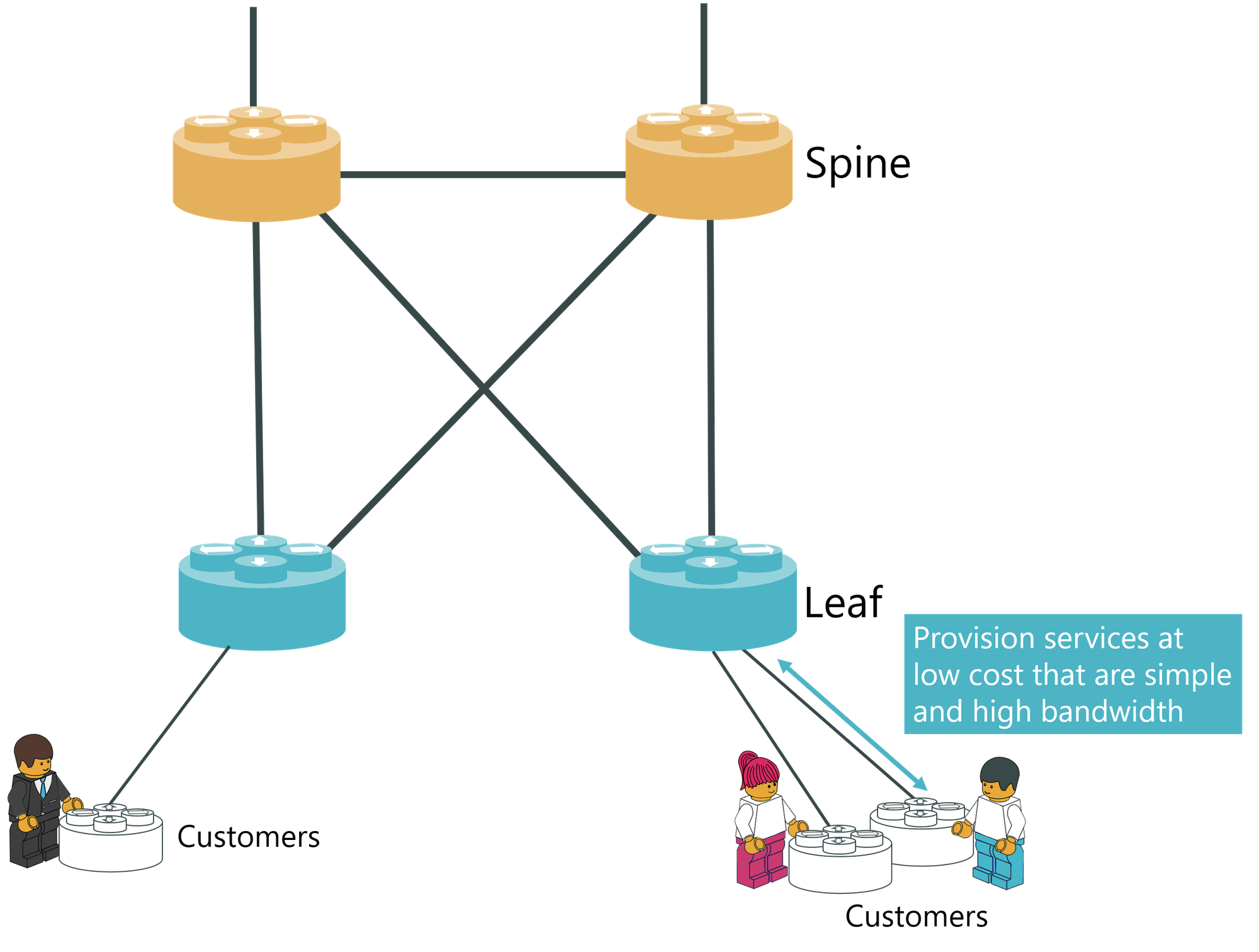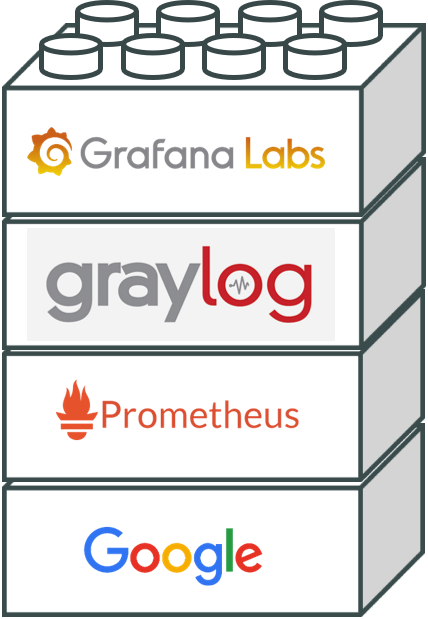Management and APIs
Consumer-Driven Management API
RtBrick’s Management API has been designed to simplify the integration with your existing OSS and BSS systems. It reduces the amount of time and effort required to make your disaggregated network operational, and it leverages widely-adopted industry tools and programming languages. RtBrick’s API is ‘consumer-driven’ – which means you can use the formats and languages of your choice, rather than have them imposed on you by a vendor. This allows you to build a client in Python, Go or Java, for example, as you prefer. And the APIs are all edited in Swagger, which is also a widely understood tool used by developers.
RtBrick’s Management API actually comprises of several underlying APIs, which each follow the same consumer-driven approach.
 RtBrick Management APIs
RtBrick Management APIs
Container API
The CONTAINER-API manages the lifecycle of the RtBrick routing software container. It is also an entry point into all the other APIs.
Configuration API
This RESTCONF API Manages persistent configurations in your network such as implementation of physical interfaces and HQoS in service designs, as well as ‘semi-persistent’ configurations such as enterprise services. The RtBrick Management API also generates ROBOT Framework key-words so you can automate REST-Conf testing.
Operational State API
This API manages state and is ideal for your day-to-day operations. It includes show commands and can manipulate states such ending a subscriber session, validating the state of optics or clearing to BGP peers or ISIS adjacencies.
Prometheus API
The PROMETHEUS API exposes all available metrics from the routing software and the underlying switch hardware in a standard format (Prometheus Exposition Format). These metrics can be used to send alert conditions, reminders and provide other essential operational intelligence.
Event Interface
This interface generates syslog messages, including additional attributes, so that they can be recorded in external systems.
RBFS Native API
Should it be needed, this API allows direct interaction with any attribute inside the RtBrick Data Store, which is a single database that includes everything from forwarding table information to the temperature of the chips in the underlying hardware. For ease of use the Operational State API abstracts this into a simpler to use layer.
Subscriber Management
Note that subscriber management is typically handled dynamically by RADIUS, which is our consumer-service BSS integration point.
The APIs are described and published here
RtBrick's Martin Ehlers explains RtBrick's APIs and shows them in action
RtBrick Management Suite (RBMS)
As an alternative to integrating directly into your own OSS system, you can use the RtBrick Management Suite (RBMS), which is an ‘off-the-shelf’ client that we have built using our own Management API. It is available to you as open-source software. It can be used as a standalone system for software management, ZTP (Zero-Touch-Provisioning) and switch inventory. Or you can use it as an open reference model to build your own client.
Tools you will need for this job
RBMS has been designed for out-of-the-box automation. All you will need to operate your network are a few simple tools:
•A web browser
•A standard DHCP server (For your zero-touch provisioning server)
•A management LAN
•RtBrick Management Suite - which is web-based software and is also available as open-source software
RtBrick's Martin Steger describes the elements required to manage a dis-aggregated network
First, create your network...
Step 1. Before you start
Create a PoD (Point of Distribution/Delivery) in your resource inventory. Assign each switch’s information including its role (e.g. leaf, spine, OLT), its HW platform and a unique id such as its serial number.
Configure a management Zero-Touch Provisioning server (one per PoD or one for many). Copy the software images and startup configurations from this ZTP server.
Order your bare metal switches and take delivery in warehouse.
Step 2. Physical installation
Install and cable your switches. Install the ZTP servers on your management LAN.
Step 3. Switch on power!
Step 4. All configuration happens automatically
The network operating system (RBFS) self-registers. All microservices self-start. All of your switches discover their physical interfaces and detect their neighbors.

Your network fabric is now ready for service provisioning
Then add users
Use open interfaces to your own service inventory. You can provision subscribers or connections via REST APIs.

Finally, in-life operations
Operating an RtBrick network brings many benefits from the world of the cloud-natives, who have learned how to operate at web-scale. Automated software version management reduces risk of human error, with software rolled-out automatically. RBMS maintains your own list of available s/w images, revisions and lifecycle state. Tools are available to simplify repair - for example you can ‘clone a switch’ for zero-touch replacement of broken hardware.
New micro-services can be updated and tested independently of other software.
And you get in-depth alarm and status management, with all metrics exposed: fan speed, temperatures, data rates, counters… Any threshold and abnormality can be configured and automated.

Watch RBMS in action
This short demo shows the RtBrick Management Suite (RBMS) managing disaggregated BNG broadband routers
And you get a rich set of open tools
You can access to a community of open Web 2.0 tools to add even more functionality, including:
- Grafana – a visualization tool
- Graylog – a log management system
- Prometheus – a monitoring tool
- RBMS API - exposes any of the RBMS GUIs to higher-level systems
